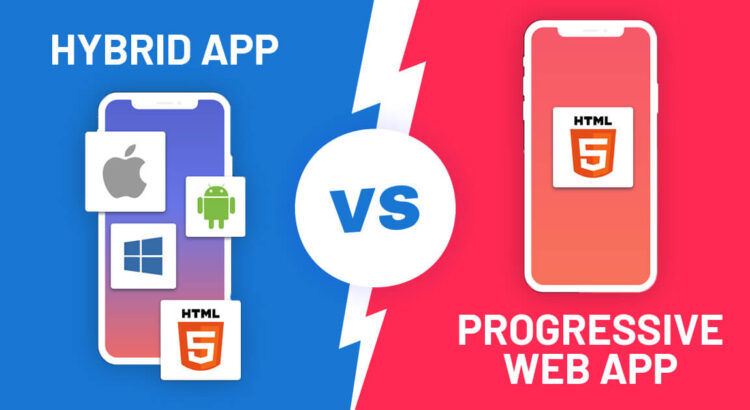In the ever-evolving landscape of mobile app development, businesses face the pivotal decision of choosing the right approach to deliver an exceptional user experience. Two prominent contenders in this arena are Progressive Web Apps (PWAs) and Hybrid App Development (HAD). Let’s delve into the nuances of each to help you make an informed decision for your next app project.
Progressive Web Apps (PWAs):
PWAs represent a cutting-edge approach that blurs the lines between traditional websites and native applications. These web applications leverage modern web capabilities to deliver an app-like experience directly through a web browser. Key features of PWAs include:
Cross-Platform Compatibility: PWAs are designed to work seamlessly across different platforms and devices, eliminating the need for separate development for iOS and Android. This cross-platform compatibility simplifies maintenance and reduces development costs.
Offline Functionality: One of the standout features of PWAs is their ability to function offline. Through the use of service workers, PWAs can cache important assets, allowing users to access certain features even when they are not connected to the internet.
Responsive Design: PWAs prioritize responsive design principles, ensuring that the user experience remains consistent across various screen sizes. This adaptability contributes to improved user engagement and satisfaction.
Hybrid App Development (HAD):
Hybrid App Development, on the other hand, involves creating a single codebase that can run on multiple platforms. This is achieved by wrapping the code within a native shell, allowing it to function like a native app. Key features of HAD include.
Cost-Effectiveness: HAD is often considered a cost-effective solution due to the ability to reuse a significant portion of the code across different platforms. This can result in reduced development time and lower expenses compared to building separate native apps.
Native Features Integration: Hybrid apps can seamlessly integrate native device features, offering a user experience similar to that of native apps. This integration allows developers to access device capabilities like the camera, GPS, and push notifications.
Faster Development Time: The single codebase approach expedites the development process, enabling businesses to bring their apps to market faster. This can be a crucial factor in industries where time-to-market is a competitive advantage.
Choosing the Right Path:
Ultimately, the choice between PWA and HAD depends on various factors, including the specific requirements of your project, budget considerations, and the desired user experience. While PWAs offer an unparalleled level of accessibility and offline functionality, Hybrid App Development may be a more pragmatic choice for businesses aiming to balance cost-effectiveness with native-like capabilities.
In conclusion, the PWA vs. HAD debate underscores the diverse options available in the mobile app development landscape. Understanding the unique strengths and trade-offs of each approach is essential to making an informed decision that aligns with your business goals and user expectations.
